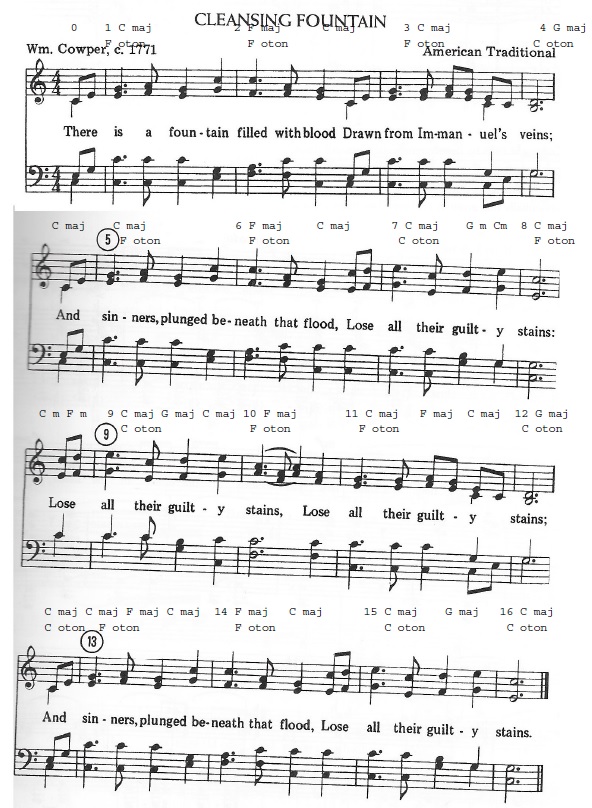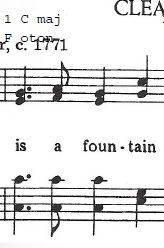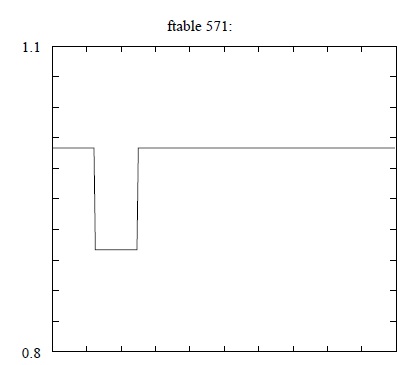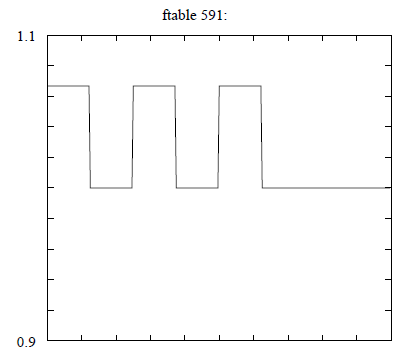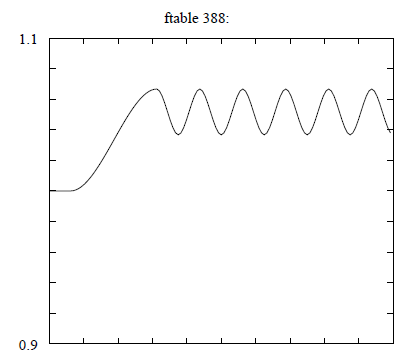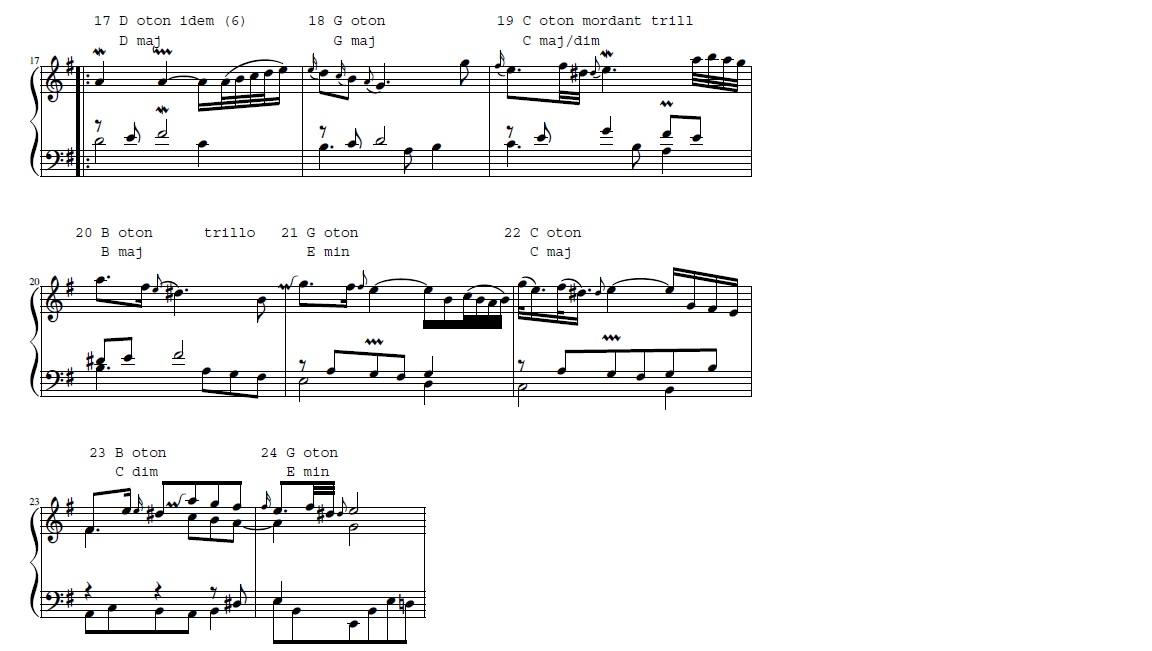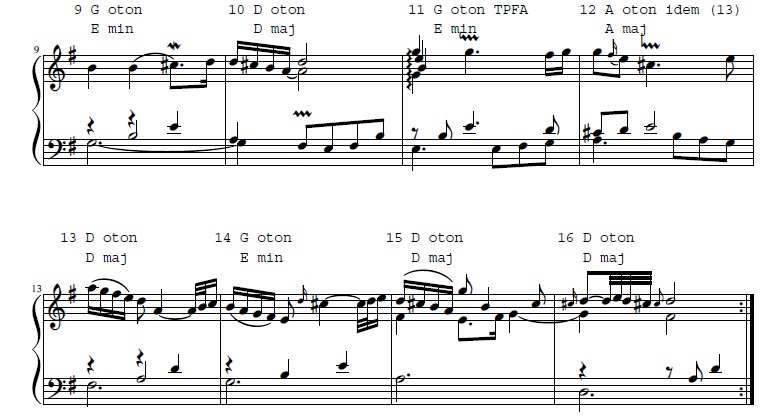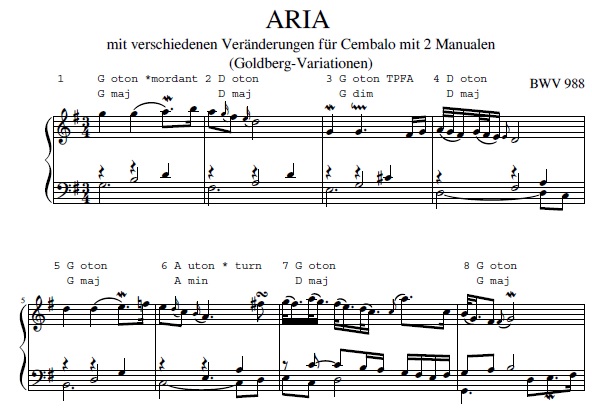I recently discovered that the table I’ve been using for the pitches in the tonality diamond to the 31-limit should have started with a zero value. As a result, all the notes are one step away from where they should have been. Since this is not an equal tones to the octave scale, that’s a big problem. This is the way it used to look:
f3 0 256 -2
0.0016727 0.0033617 0.0054964 0.0056767 0.0058692 0.0060751 0.0062961 0.0065337 0.0067900 0.0070672
0.0073681 0.0076956 0.0080537 0.0084467 0.0088801 0.0093603 0.0098955 0.0104955 0.0111731 0.0115458
0.0119443 0.0124712 0.0128298 0.0133248 0.0138573 0.0144353 0.0150637 0.0157493 0.0159920 0.0165004
0.0170424 0.0173268 0.0176210 0.0182404 0.0189050 0.0192558 0.0196198 0.0203910 0.0212253 0.0216687
0.0221309 0.0241174 0.0249171 0.0241961 0.0247741 0.0253805 0.0256950 0.0258874 0.0266871 0.0275378
0.0277591 0.0281358 0.0289210 0.0294135 0.0297513 0.0301847 0.0304508 0.0315641 0.0327622 0.0330761
0.0336130 0.0340552 0.0347408 0.0352477 0.0354547 0.0359472 0.0365825 0.0369747 0.0372408 0.0374333
0.0386314 0.0399090 0.0401303 0.0404442 0.0409244 0.0417508 0.0424364 0.0427373 0.0435084 0.0441278
0.0443081 0.0446363 0.0454214 0.0459994 0.0464428 0.0467936 0.0470781 0.0475114 0.0478259 0.0498045
0.0516761 0.0519551 0.0524319 0.0525745 0.0528687 0.0532428 0.0536951 0.0543015 0.0551318 0.0556737
0.0558796 0.0563382 0.0568717 0.0571726 0.0582512 0.0591648 0.0593718 0.0597000 0.0603000 0.0606282
0.0608352 0.0617488 0.0628274 0.0631283 0.0636618 0.0641204 0.0643263 0.0648682 0.0656985 0.0663049
0.0667672 0.0671313 0.0674255 0.0676681 0.0680449 0.0683249 0.0701955 0.0721741 0.0724886 0.0729219
0.0732064 0.0735572 0.0740006 0.0745786 0.0753637 0.0756919 0.0758722 0.0764916 0.0772627 0.0775636
0.0782492 0.0790756 0.0795558 0.0798697 0.0800910 0.0813686 0.0825667 0.0827592 0.0830253 0.0834175
0.0840528 0.0845453 0.0847524 0.0852592 0.0859448 0.0863870 0.0869249 0.0872478 0.0884359 0.0895492
0.0898153 0.0902487 0.0905865 0.0910790 0.0918642 0.0922409 0.0924622 0.0933129 0.0941126 0.0943050
0.0946195 0.0952259 0.0958039 0.0960829 0.0968826 0.0978691 0.0983313 0.0987747 0.0996090 0.1003802
0.1007442 0.1010950 0.1017596 0.1024790 0.1026732 0.1029577 0.1034996 0.1040080 0.1042507 0.1049363
0.1055647 0.1061427 0.1066762 0.1071702 0.1076288 0.1080557 0.1084542 0.1088269 0.1095045 0.1101045
0.1106397 0.1111199 0.1115533 0.1119463 0.1124044 0.1126319 0.1129328 0.1132100 0.1134663 0.1137039
0.1139249 0.1141308 0.1143243 0.1145036 0.1166383 0.1183273 0.1200000
And this is the way it should have looked:
f3 0 256 -2
0.000 0.0016727 0.0033617 0.0054964 0.0056767 0.0058692 0.0060751 0.0062961 0.0065337 0.0067900 0.0070672
0.0073681 0.0076956 0.0080537 0.0084467 0.0088801 0.0093603 0.0098955 0.0104955 0.0111731 0.0115458
0.0119443 0.0124712 0.0128298 0.0133248 0.0138573 0.0144353 0.0150637 0.0157493 0.0159920 0.0165004
0.0170424 0.0173268 0.0176210 0.0182404 0.0189050 0.0192558 0.0196198 0.0203910 0.0212253 0.0216687
0.0221309 0.0241174 0.0249171 0.0241961 0.0247741 0.0253805 0.0256950 0.0258874 0.0266871 0.0275378
0.0277591 0.0281358 0.0289210 0.0294135 0.0297513 0.0301847 0.0304508 0.0315641 0.0327622 0.0330761
0.0336130 0.0340552 0.0347408 0.0352477 0.0354547 0.0359472 0.0365825 0.0369747 0.0372408 0.0374333
0.0386314 0.0399090 0.0401303 0.0404442 0.0409244 0.0417508 0.0424364 0.0427373 0.0435084 0.0441278
0.0443081 0.0446363 0.0454214 0.0459994 0.0464428 0.0467936 0.0470781 0.0475114 0.0478259 0.0498045
0.0516761 0.0519551 0.0524319 0.0525745 0.0528687 0.0532428 0.0536951 0.0543015 0.0551318 0.0556737
0.0558796 0.0563382 0.0568717 0.0571726 0.0582512 0.0591648 0.0593718 0.0597000 0.0603000 0.0606282
0.0608352 0.0617488 0.0628274 0.0631283 0.0636618 0.0641204 0.0643263 0.0648682 0.0656985 0.0663049
0.0667672 0.0671313 0.0674255 0.0676681 0.0680449 0.0683249 0.0701955 0.0721741 0.0724886 0.0729219
0.0732064 0.0735572 0.0740006 0.0745786 0.0753637 0.0756919 0.0758722 0.0764916 0.0772627 0.0775636
0.0782492 0.0790756 0.0795558 0.0798697 0.0800910 0.0813686 0.0825667 0.0827592 0.0830253 0.0834175
0.0840528 0.0845453 0.0847524 0.0852592 0.0859448 0.0863870 0.0869249 0.0872478 0.0884359 0.0895492
0.0898153 0.0902487 0.0905865 0.0910790 0.0918642 0.0922409 0.0924622 0.0933129 0.0941126 0.0943050
0.0946195 0.0952259 0.0958039 0.0960829 0.0968826 0.0978691 0.0983313 0.0987747 0.0996090 0.1003802
0.1007442 0.1010950 0.1017596 0.1024790 0.1026732 0.1029577 0.1034996 0.1040080 0.1042507 0.1049363
0.1055647 0.1061427 0.1066762 0.1071702 0.1076288 0.1080557 0.1084542 0.1088269 0.1095045 0.1101045
0.1106397 0.1111199 0.1115533 0.1119463 0.1124044 0.1126319 0.1129328 0.1132100 0.1134663 0.1137039
0.1139249 0.1141308 0.1143243 0.1145036 0.1166383 0.1183273 0.1200000
I noticed that there was something wrong with the G major based on the 1:1 otonality. The B a 5:4 above the G sounded wrong. The G was using 127th value in the table, for a value of 0.0701955, but the 127th value in the old table was 0.0721741. The same offset made the B, which was the 198 value in the table should have been using the value of 0.1088269, but in the old table, the 198th value was 0.1095045.
So basically whenever I thought I was playing a G 3:2 above 1:1 C, I was playing a 44:29, and the B should have been 15:8 above 1:1, I pulled a 32:17. That made a major third of 373 cents instead of the 386 that is the just 5:4. That’s a difference of 13 cents. Some intervals are not so bad, but that means all the pieces I’ve made since May of 2017 are full of lots of wrong notes.
I regret the error. I’m going back and redoing some of the pieces to fix the mistake. This might take a while.
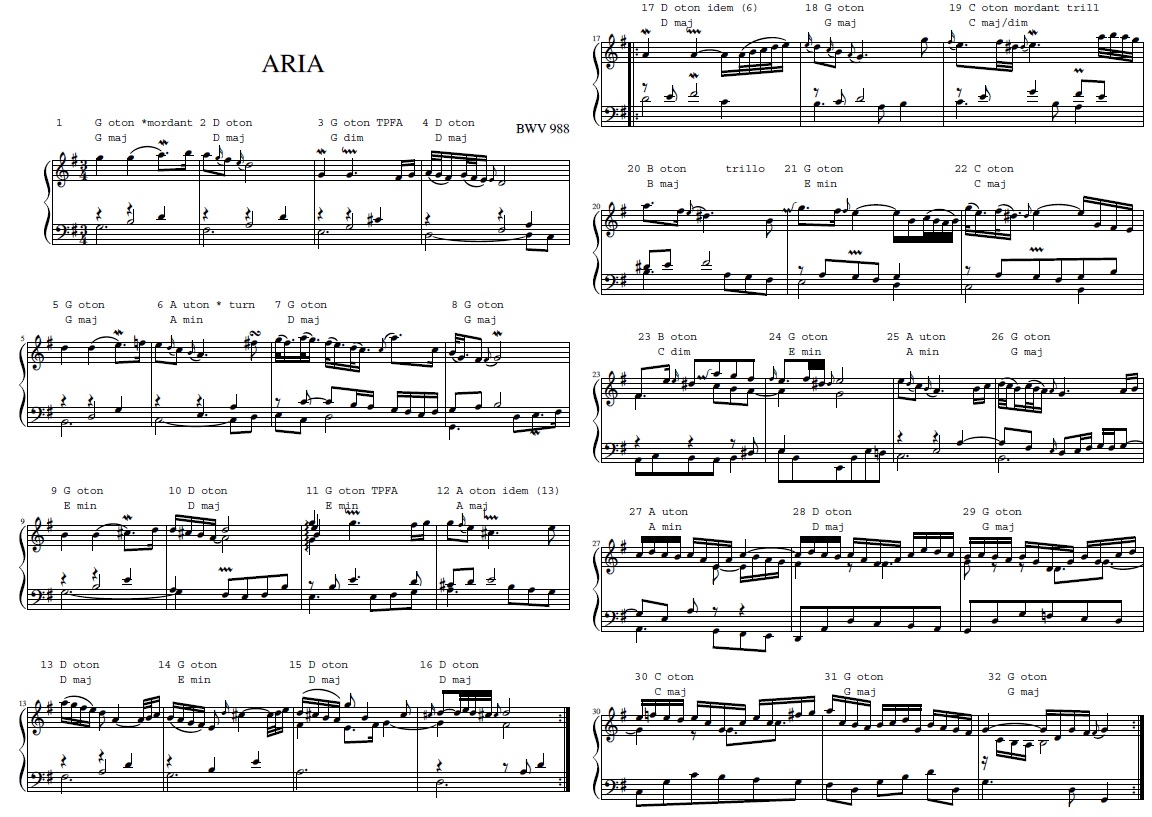
or download here:
Machine4 – Goldberg Aria and Variations 1-8 v29
